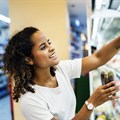#BizTrends2019: Five customer engagement technology trends we can't ignore

Technology threatens to eclipse the fundamentals of customer engagement and it is important for retailers to keep their eyes on the prize – using the ever-morphing tech to attract and keep a consumer.
The customer experience now goes beyond just one touch point – it is the holistic journey, involving physical, emotional and psychological processes.
Technology shouldn’t distance the customer via automation; it should magnetise them, drawing them in closer, increasing the depth of the relationship they have with the brand
A customer experience is defined by the customer, for the customer, at each touch-point, each time. - Esteban KolskyThree things help define a good customer experience -
- Achievement - getting exactly what they want.
- Ease - how simple it is to shop.
- Validation - how the purchase and product make them feel.
The following tech trends, incorporated correctly, tap into one or more of these and can aid the customer experience without eclipsing the product or the humanity behind the brand.
1. AI-propelled technologies
The demand for personalised goods — and the need for mass customisation — is a trend with staying power. - Vicki Holtessence, these trends are all forms of artificial intelligence because, as Kevin Maney writes, the beauty of AI is that it can learn about individual customers and give smaller businesses the confidence to produce goods which service “very narrow, passionate markets.” Now, bigger is not necessarily better when it comes to consumer brands. AI-propelled technologies can help specifically with:
- Personalisation: How to share services around people.
- Adaptation: Understanding the speed of lifestyle changes and be agile in adapting to external forces.
- Automation: Pre-empting and predicting for the consumer, making lifestyle integration with AI as seamless as possible.
Online US company Stitch Fix for example; uses style profile questions to hand select a customer’s garments. The products are mass-produced but by cleverly meshing AI and human engagement the style and fit are tailored to the individual. Also worth noting is their “Buy what you like, send back the rest. Shipping is free and easy both ways.” This ties into an important statistic reported by Walker Sands Communications, that offering free delivery encourages 9 out of 10 users to purchase.
2. Augmented reality
The customer owns the customer experience. - Vala Afshar“Samsung’s new augmented reality make-up app is set to change the face of shopping”, writes Sylvia Mckeown in the Financial Mail, saying this has “inadvertently and casually commodified AR and “changed the face of retail forever.” While I’m not sure about “inadvertently”, savvy marketers are already tapping into showing potential customers what their products look like in “real time” or “on”.
Using AR and live streaming L’Oreal has created a digital beauty assistant helping you test products and see what looks good on your face, from the comfort of your own home.
Lubomira Rochet, chief digital officer of L’Oreal says of the rollout, “You get into a really personal conversation so you can have a really personalised recommendation.” But more tellingly states “Our core business model is to produce shampoo bottles and skin care, makeup and perfume.” The message is a wise one for retailers to heed; your product is the hero, use technology to make it centre stage.
3. Virtual reality
60% of marketers struggle to personalise content in real time, yet 77% believe real-time personalisation is crucial. - AdobeAccording to Retail Customer Experience retailers will be using VR for store layouts, display concepts, category sets or other retail strategies before making huge investments that may be too risky at present.
But online shopping explosion, Alibaba think differently. They apparently have a full virtual reality device for their massive site allowing customers to “walk” through a store buying products. Check out their promo video and, as they say, “Watch how everything, from perusal to purchase, takes place inside a VR environment.” We look forward to it becoming a “real” VR option.
Other overseas brands such as Tesco, Adidas and Ikea have flirted with ideas such as VR tours for customers but there’s a sense that this technology has not quite been leveraged to its full extent for the consumer, but for the management of business what better way to check out your physical store than by doing a VR walk though?
4. AI/VR/VA partnerships
Listening to feedback makes customers feel more appreciated and part of the value creation process. - Ray PoynterIt’s soon going to be a given that retailers need to tap into using voice recognition virtual assistants to engage with and gather data on their customers. In this way AI will intuitively learn consumer habits and pre-empt their needs, giving them exactly what they want.
While Microsoft, Amazon and Apple have Cortana, Alexa and Siri, brands such as Volvo have recently shown how retail can take AI engagement to higher levels. As writer Kirsten Korosek says in Fortune Magazine, “Google is no longer creeping into the car. It’s invading.”
Another retailer in the US using a sweetly integrated VA partnership is Dunkin’ Donuts hooking up with Amazon and Alexa making it, according to Travel and Leisure, possibly the “most technologically advanced donut shop in the country... It’s a match made in coffee heaven. Especially since America runs on Dunkin’ and Alexa might just be trying to take over the world.”
The Dunkin’ Donut’s integration leverages off their DD loyalty programme, which has 8 million members and growing. With South Africa’s huge loyalty programme following it would be a good idea for some of our big players (Pick ’n Pay, Clicks, Woolworths) to follow suit.
5. Big data
62% of retailers report that the use of information (including big data) and analytics is creating a competitive advantage. - IBMA natural progression and also part of AI is big data and how, when used right, enables retailers and customers to forge deeper relationships. As KPMG says in recent research, “Retail websites or online shops were the most common source of initial product awareness, cited by nearly a third of consumers,” so the more analytical research we can do from online traffic the better.
Datameer sums up the gold mine which big data can be for retailers, as follows:
- Customer behaviour analytics.
- Personalising the in-store experience.
- Increasing conversion rates via targeted promotions.
“81 % of consumers want brands to understand them better and know when and when not to approach them.” Accenture
In conclusion, although the AI integration discussed is a necessity within the local retail landscape, beefing up on technology does not guarantee success because of the complexity and diversity of the country.
.Nielsen retail vertical lead, Gareth Paterson says, South Africa has added 100,000 new traditional trade (such as a Spaza) and modern trade (hypermarkets, supermarkets) stores to its retail world during the last two decades.
“The landscape is shifting, not only between modern and traditional channels but also from big to small, offline to online and between specialist channels such as convenience, specialist, pop up and niche outlets.”
Giving the customer the best experience for them personally is going to be where the retail battle is fought and won, or to paraphrase Tiffani Bova, the overall customer experience is the last source of sustainable differentiation in retail – both locally and globally.



















